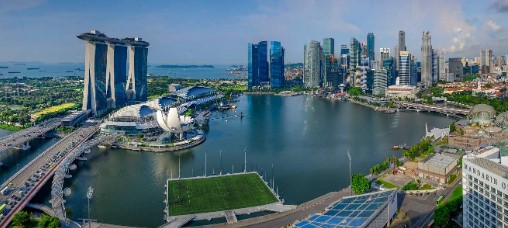In the world of modern urban planning, the term URA is frequently mentioned as a key authority responsible for shaping a nation’s landscape. URA, or the Urban Redevelopment Authority, is Singapore’s national urban planning authority that plays a major role in ensuring urban development occurs in a systematic, sustainable, and inclusive manner.
This article will explain what URA is, its role in national development, and its implications for society and the economy.
What is URA?
URA is a government agency under Singapore’s Ministry of National Development. Established in 1974, its primary role is to plan and regulate the physical development of the country to ensure a balance between economic growth, environmental protection, and the well-being of its people.
While the acronym URA is also used in other fields, its most prominent usage is in urban planning.
Main Functions of URA
The roles of URA can be divided into several key functions:
- Land Use PlanningURA is responsible for producing the Master Plan that designates zoning for residential, commercial, industrial, and recreational areas.
- Development ControlEvery development project—whether skyscrapers or public infrastructure—must obtain URA approval to ensure alignment with the nation’s long-term plans.
- Heritage ConservationBesides building modern structures, URA preserves architectural heritage. For example, many historic buildings in Chinatown, Kampong Glam, and Little India are protected under URA policies.
- Smart City InnovationURA implements smart city concepts, using digital technology for traffic management, smart housing, and user-friendly public amenities.
URA’s Urban Development Strategies
To make Singapore a sustainable and competitive nation, URA implements several strategies:
- High but controlled density – Optimizing limited land with high-rise buildings.
- Environmental balance – Designating green zones, public parks, and recreational spaces in every development area.
- Smart mobility – Providing efficient public transport infrastructure to reduce reliance on private vehicles.
- Technology adoption – Using geospatial technology, big data, and artificial intelligence for more precise urban planning.
URA’s Impact on the Economy
URA’s success is not only visible in the city’s physical beauty but also in the nation’s economic growth:
- Attracting foreign investors – Well-planned modern infrastructure makes Singapore a top investment destination.
- Rising property values – Strict development control ensures stable and attractive property values.
- Thriving tourism industry – The combination of iconic buildings like Marina Bay Sands and preserved heritage areas boosts tourist appeal.
URA and People’s Well-Being
Beyond economics, URA also emphasizes social well-being:
- Comfortable housing – Land use planning ensures sufficient space for public housing projects.
- Recreational spaces – Public parks, green corridors, and recreational areas promote a healthy lifestyle.
- Harmonious communities – Urban development is designed to allow people from diverse backgrounds to live close together in an inclusive environment.
Challenges Faced by URA
Despite its many successes, URA faces several major challenges:
- Land scarcity – With only 728 km² of land, Singapore struggles to balance development with green space preservation.
- Population pressure – Growing population demands more housing and public facilities.
- Climate change – URA must ensure urban development is sustainable and resilient against flooding, extreme heat, and other climate impacts.
URA as a Global Model
URA’s success has become a benchmark for many countries. Delegations from Asia, the Middle East, and Europe frequently visit Singapore to study its urban planning model. According to a report from reputable international sources, their approach to balancing economic development with environmental conservation has earned global recognition.
Frequently Asked Questions (FAQ) About URA
Is URA only responsible for development in Singapore?
Yes, URA’s primary function is to plan and control urban development in Singapore.
What is the difference between URA and HDB?
URA plans land use and urban development, while HDB (Housing & Development Board) builds and manages public housing.
How does URA ensure environmental sustainability?
By designating green zones, requiring open spaces in developments, and promoting eco-friendly technologies.
Conclusion
URA has proven that meticulous urban planning can create a modern, inclusive, and sustainable nation. Through comprehensive master plans, heritage conservation, and technology adoption, URA not only shapes Singapore’s physical landscape but also ensures the well-being of its people.
Societies and policymakers in the region can learn from URA’s success in crafting sustainable development plans, ensuring future generations enjoy a balanced and high-quality urban life.
